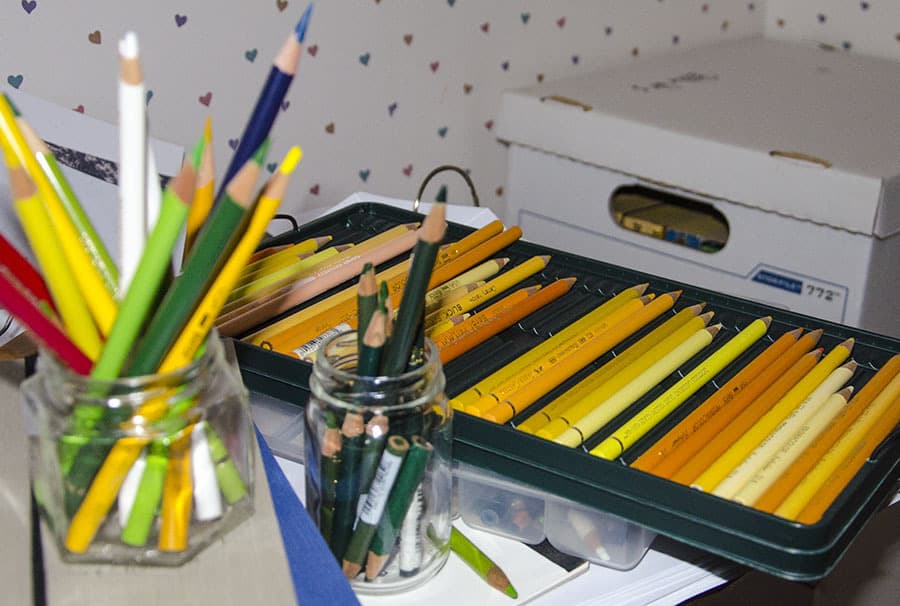Blog
The Art of Pencil Crayon Painting 2

Not all pencil crayons are created equal. Sometimes the very colour you love the most comes in a substandard crayon that will not stand the test of time. As the Romans stated so eloguently, Vita Brevis, Ars Longa !! (that is, life is short but Art lasts).
I use a number of pencil crayon brands. Why? Because the pigmentation of the various brands differ and you may find the perfect colour that you cannot achieve by mixing only in that brand. It is not just a question of quality and lightfastness. Different pencil crayon brands lay down colour differently, and differ in how you can blend, layer, achieve edges, avoid waxy bloom, avoid lead breakage, and so on. I will discuss some of my favourite brands and why I like them. I have read others reviewing pencil crayon brands and some of those lucky ones get free pencil crayons just so they can review them. I find I cannot trust their reviews because I may want different effects than they do, so, as I have said before – experiment for yourself. As good pencil crayon makers also provide open stock, you can purchase a few pencil crayons in the colour range you use frequently to compare before committing to buying sets or a quantity of a brand.
My first pencil crayons were Laurentians. They are a Canadian pencil crayon maker and make school and student level crayons and have done so for decades. I used them as a child and surprisingly some of those pictures have lasted with bright pigment remaining true even though they are been left hanging in a sunlit room for decades. It was with these pencil crayons that I learned that you could push the medium to create blended and layered works of stunning realism. I still keep these pencil crayons around for sketching.
In my current artworks I use Prismacolor, Faber-Castell, Blick’s own brand that are made in the Czech Republic and have just started using the Japanese Irojiten brand.
Prismacolor pencil crayons come in a truly great range of colours. As you can purchase open stock, I have every green they make and multiples of the other colours I use a lot. I have several crayons of one colour sharpened at once so I do not have to jump up and sharpen them in the middle of working. These pencil crayons are richly pigmented and blend beautifully. Unfortunately, the very quality that makes them blendable, also makes them vulnerable to breakage. I have at times sharpened a pencil more than 5 times because it broke just inside the wooden casing, leaving me with a broken off tip that cannot be used. I have a box of them, waiting for the day inspiration strikes as to what to do with them. Prismacolor crayons do take several layers but at some point they do stop taking pigment and if you keep pushing, the paper surface may start to lift. At those times, I have switched to a different brand like Faber-Castell as they go a bit more distance. I have also experimented with using a solvent (Artist’s grade colourless thinner) to blend the layers and then work over top. I have workable fixative that I use with pastels and have read that they may help with this problem with pencil crayon, but I have not tried it yet. Sometimes better planning could solve the problem.
Faber-Castell crayons are an interesting change from Prismacolor. I have been using these for about 3 years. They are harder than Prismacolor and have a chalky feel to them. They work a bit like soft pastels in some cases. They also blend well and when the Prismacolors reach their limit, they swan in and finish the job.
Right now I have just started working with Irojiten pencil crayons and don’t have much to say as yet. So far they seem a little like Faber-Castells, but time will tell. I am also just starting to use Blick’s own brand that are made in the Czech Republic. So far they seem between Prismacolour and something else. Time will tell.